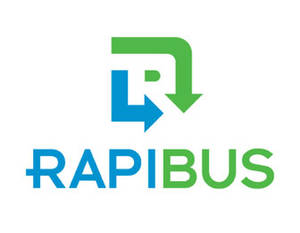A Word from the Chairman about the Rapibus
Published : 10-30-2013
Hello
An article in the Globe and Mail last year reported that a survey had determined that 120 cities around the world have adopted a bus rapid transit (BRT) system. Almost 100 of these systems have been built in the last 10 years, and this technology is gaining momentum. The STM in Montreal recently decided to abandon the idea of a tram on Pie IX and is now proposing BRT. The Rapibus is thus the latest, but not the least, in a long list of BRT systems.
Because some people are still asking why we did not choose a heavy mode, we would like to point out that comparative studies carried out for the STO showed that BRT was the mode that met our needs best. When it comes to ridership, while a subway can move up to 40,000 people an hour in each direction, and light rail can move up to 20,000 people, a BRT system can move up to 10,000 people an hour in each direction, depending on the specifics of the corridor. It is clear that we are far from these numbers, with about 3,500 people per hour in one direction, and far fewer in the other. We are therefore several years away from being able to go from BRT to a light rail system.
According to the experts who have come to see our system, we have a very good system that will be extremely efficient once the adjustment period has ended. The Rapibus is an effective, flexible, inexpensive mode of transportation compared with heavy modes, as well as other BRT systems.
In 2006, the Toronto Transit Commission calculated that the difference between light rail and BRT to build a corridor along Finch West was $600 million. The amount came to $27 million per kilometre for BRT and $85 million per kilometre for light rail. At $21 million per kilometre, the Rapibus compares quite favourably.
It also stands up well compared with the new BRT in Winnipeg, which was completed last year at a cost of $38 million per kilometre, or the BRT in York, currently under construction and assessed at $34.2 million per kilometre. In 2013 dollars, the cost of building the Transitway comes to about the same as the Rapibus. Ottawa also has plans to extend its Transitway.
A few words now about the feeder system and neighbourhood bus routes taking riders to the main corridor. Although it was announced and explained more than a year ago, namely at public consultations in the spring, this system appears to be causing some surprise. I would therefore like to recall that I had talked about it in February 2013, with PowerPoint slides to illustrate, at a public meeting of the City of Ottawa's Transportation Committee.
At times we have been told that we need to talk to our counterparts in Ottawa, which we certainly did during the Rapibus planning process. The result of this conversion was clear as far back as 2009: downtown Ottawa has a bus congestion problem. Light rail would make it possible to reduce the number of OC Transpo buses by about two thirds, and the city is asking Gatineau to do its part to reduce the number of STO buses. We understand this reality and are committed to reducing the number of buses by 25%, and are continuing to work with Ottawa to maximize the use of the buses that cross the river, be they red or blue.
The most efficient and economical way to reach this objective is through a feeder system. Such a system also allows us to adhere to our travel times and to reduce the number of unproductive trips. In other words, by using a feeder system, we are moving more people per bus at a lower cost per kilometre.
But that is not the only reason that encouraged us to rethink the express routes. Most cities that adopt a mode with exclusive corridors, be it light rail or BRT, turn the express routes into more efficient local routes that run more frequently.
This is what enables us to increase neighbourhood service by 25% and to offer our riders more mobility options.
Considering the congestion in downtown Ottawa, and the desire to increase neighbourhood service and create a system that links an even greater number of employment, entertainment and business areas, reverting back to the express routes as they were before the Rapibus started would be difficult to achieve.
This being said, if we are unable to sufficiently reduce certain travel times deemed to be too long even after all the efforts have been made to deliver the system as planned in the service offer, we can explore other options.
I would like to add, based on the principle that to maximize the use of the main corridor and to create the type of redevelopment tool envisaged by the City of Gatineau, that all methods of travel (walking, cycling, neighbourhood routes, kiss-and-ride areas, reserved lanes) should be encouraged.
Regarding last week's overview, as you know, the STO is committed to optimizing the Rapibus as necessary during the essential adjustment period needed when a brand new public transit system is introduced. Our direct observations on site right from the start of service, as well as comments from riders, have enabled us to adjust the system on a daily basis.
Although improvements are still needed, we are finding that the Rapibus meets the needs of a large part of the population. Route 68, for instance, which links Labrosse station to the Cégep de l'Outaouais on Cité des jeunes, is a resounding success. See other conclusive examples(in French only).
Overall, even if we are unable to be more precise about ridership, we have noted a 28% increase in the number of new smart cards issued compared with the same period in 2012. That in itself is excellent news.
Adding more trips during the morning and afternoon rush hours enabled us to stabilize the service on routes 100 and 200 in the Rapibus corridor, which had the positive impact of reducing the wait times for buses leaving the stations in Gatineau in the morning, and leaving Ottawa in the afternoon, thereby increasing fluidity in the corridor and ensuring better distribution of the number of passengers on buses.
We can even say that over 80% of the service in the corridor has been firmed up now. The STO is still continuing its efforts, with work also being done to improve the throughway priority of buses at traffic lights along the corridor by ensuring adequate synchronization of the traffic light cycle to give buses priority.
The STO is currently conducting an extensive analysis of the neighbourhood routes. Our priority is to ensure that buses adhere to the planned travel time for each neighbourhood route.
A detailed analysis of each route will allow us to identify adjustments, starting this week. Among others, we are considering adding trips, extending the service areas on certain routes, looking at optimal connections with the corridor and even possibly revising certain routes. These would be short- and medium-term changes. We are also looking at different possibilities for improving the travel time on route 95 serving the Buckingham sector.
We know that a time gain is possible since the current boarding time at the different stops along the route is longer than anticipated, thereby causing delays with respect to the departure times indicated at Encan Larose. We will therefore make adjustments to the route 95 timetable.
It is important to recall, especially since this addresses a need expressed by citizens in Buckingham and Masson-Angers last spring, that riders on this route heading to downtown Ottawa do not need to transfer at Labrosse station, since route 95 changes to route 200 to travel directly along the corridor during the morning rush hour.
I would also like to bring your attention to the fact that the pre-Rapibus User's Guide clearly stated that the planned travel time from Buckingham to Ottawa during the morning rush hour was 49 minutes.
While a lot was said about the 25 minutes needed to travel the 34 kilometres between Encan Larose and downtown Ottawa, this time was never our planned time, even before the Rapibus. We have never been able to plan trips based on such a time, nor to guarantee it. For basic productivity purposes, the STO would not have been able to leave such a big gap between the real time and the planned time in its schedule. See examples of travel time based on distance covered (in French only).
We are sensitive to the demands of certain groups of citizens, but we also still have to allow for a bit more time to improve the neighbourhood bus route system.
As for service to Pointe Gatineau on routes 57 and 67, we have already received comments from riders in this sector regarding the travel time and are looking at the changes we can make. A working meeting to finalize our analysis is planned in the next few days and we are confident that we will be able to announce improvements to the existing service shortly.
In addition to the improvements that the STO has been making to the Rapibus since October 21, other actions are also helping to reach this objective. I have already mentioned optimization of the traffic lights along the corridor, and we are also working on improving the parking offered.
The STO is announcing today that a call for tenders will be issued soon to start the work for phase 2 of the Labrosse incentive parking facility. This phase will allow between 200 and 250 parking spots to be added by next spring. In the meanwhile, the STO is planning temporary solutions for the winter.
The STO also plans to keep the Jean René Monette parking lot for a few more months, in collaboration with the City.
Discussions are also under way with the shopping centre near De la Gappe station to reach a permanent agreement to offer 120 permanent parking spaces for STO riders.
Finally, the STO would like to thank its patrons, because many of our riders convey their satisfaction and confidence in the Rapibus to us every day. We know that it is difficult, and even impossible for a public transit corporation to meet everyone's individual needs, but we are taking action to satisfy as many people as possible in the short, medium and long terms. That is our mission, and that is our motivation.
Thank you.
Patrice Martin
STO Chairman





